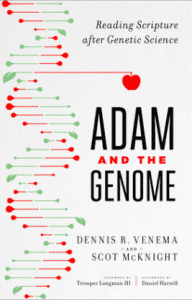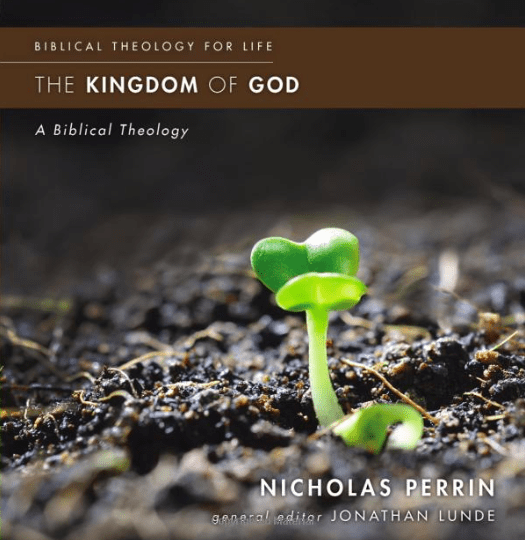 From Dennis Venema, Scot McKnight, Adam and the Genome
From Dennis Venema, Scot McKnight, Adam and the Genome
Before I get to clips from the book, I want to suggest that the best place to begin when it comes to the so-called “historical” Adam issue is not with the word “historical” but with the word “literary.” That is, the only Adam Jews knew was the Adam of the Bible. That’s the literary Adam and the word “literary” does not mean either “historical” or “mythical.” It means the Adam in the Bible.
That Adam takes on a life of his own, and often his partner Eve is neglected in Jewish traditions, as the Hebrew, Israelite and Jewish traditions unfold in history. Every Jewish understanding of Adam begins with their appropriation of this literary Adam. This category is safe, wise and avoids the immediate stimulation of some thinker’s amygdala fear that the Bible is about to fall apart. On the literary Adam we can all agree, even if most of us will not be satisfied. It won’t hurt to begin with “the Adam of the Bible.”
Once we begin with “literary” Adam we can discern from the text in context what other terms — Fallen Adam and Eve, Sinful Adam and Eve, etc — would be accurate. My use of “literary” is not a subtle ploy to sneak an unhistorical Adam in through a side door but a rock-bottom necessity: the Adam we all begin with is the Adam (and Eve) of Genesis 1-4.
Now to the clips from the book itself: Adam and the Genome
The adjective most popular in the Adam (and Eve) discussion is historical. I’m frequently asked when this science faith discussion arises, “Do you believe in the historical Adam?” For some that adjective will give the questioner the right word and the answer will determine if the answerer is safe, faithful, orthodox, evangelical and all sorts of other adjectives. We cannot dodge that adjective. One can pretend “historical” before Adam doesn’t matter just as one can pretend it is all that matters, and both views will end up dodging something. Here’s how important this is: Zondervan just published a book edited by Matthew Barrett and Ardel Caneday called Four Views of the Historical Adam. Here are the titles to the chapters:
No Historical Adam: Evolutionary Creation View
Historical Adam: Archetypal Creation View
Historical Adam: Old-Earth Creation View
Historical Adam: Young-Earth Creation View
Notice the importance of the adjective! (Notice, too, that there is evidently no need for Eve in this one.) The entire debate is sorted out by whether or not one believes in the historical Adam. Adjectives evidently matter when it comes to Adam and Eve.
So I want to contest the appropriateness of this adjective as the controlling issue but let’s first clarify who this historical Adam and Eve. The adjective historical when attached to Adam and Eve means:
- two actual (and sometimes only two) persons named Adam and Eve existed suddenly as a result of God’s “creation,”
- those two persons have a biological relationship to all human beings that are alive today (biological Adam and Eve, an Adam and Eve known only in modern science, and this needs to be further specified in the following category),
- the biological Adam and Eve become through more science the view that their DNA is our DNA (genetic Adam and Eve), and it often means
- those two sinned, died, and brought death into the world (fallen Adam and Eve),
- those two passed on their sin natures (according to many) to all human beings (sin nature Adam and Eve), and it means
- without their sinning and passing on that sin nature to all human beings, not all human beings would be in need of salvation.
- Therefore, if one denies the historical Adam, one denies the gospel of salvation.[i]
That much, and probably more, is inherent to the adjective historical when pressed into singing alongside Adam and Eve. The so-called historical Adam then includes the biological, genetic and sin nature Adam and Eve. The stakes are high, then, for some uses of historical Adam. Way too high.
I have big doubts that when Genesis 1—2 was written any of that or at least most of that was what was meant by “Adam and Eve.” I’ll put it in terms of my principles: I’m not sure we are being respectful or honest with the Bible, and therefore the Scripture principle comes into play, too, when we make Genesis 1—2 speak about something it was not speaking about: biology (for that is modern science), transmission of sin (not stated explicitly in Genesis), genetics (modern science), and the like. I don’t dispute that the adjective has an important role to play in our theology, but I do dispute that what most mean by historical Adam is what Genesis meant in its world. When we use the adjective historical with Adam or Eve we must know the author intended all or most, or at least one and two, if we want to use historical accurately.
[i] This has been a passionate concern for Karl Giberson. See Karl W. Giberson, Saving the Original Sinner: How Christians Have Used the Bible’s First Man to Oppress, Inspire, and Make Sense of the World (Boston, MA: Beacon Press, 2015), 27–43.
Again, these are clips from Adam and the Genome










